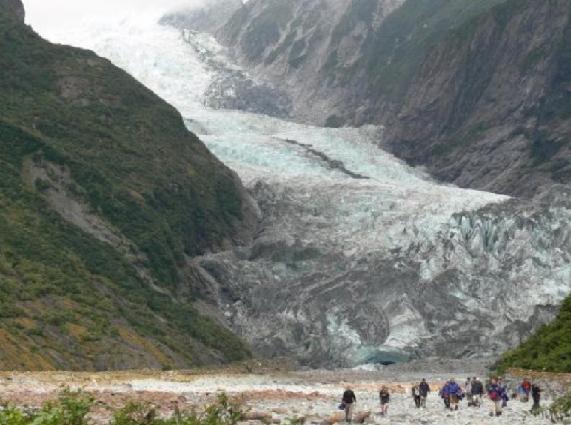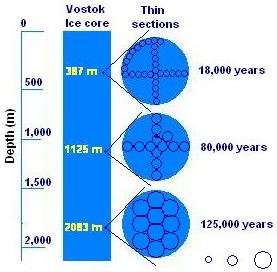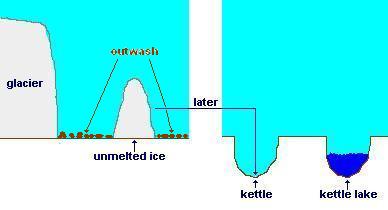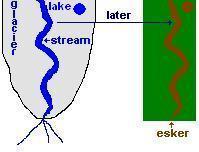|
COURSE LECTURE NOTES:
|
SCIENCE | MATTER |
SOLAR SYSTEM |
PLANETS | ATMOSPHERE |
WIND and TEMPERATURE |
HUMIDITY | WEATHERING |
SOIL |
SEASONS | MASS WASTING |
SEASONS and CLIMATE |
WIND WORK |
STREAMS | LAND FORMS |
GROUND WATER |
CAVES/KARST | THE OCEAN |
TIDES & ESTUARIES |
WAVES | GLACIERS |
GLACIAL LANDFORMS |
VOLCANOES | VOLCANOES |
CHON | PLATE TECHTONICS |
EARTHQUAKES |
ROCKS |
CLIMATE CHANGE |
GLACIERS
1. Glacier - a permanent body of ice, consisting largely of recryatallized snow, that shows evidence of downslope or outward movement due to gravity.

2. From snow to glacier - new snow is very porous. The delicate points of the snowflake gradually evaporate. The resultanr water vapor condences near the center of the snowflake. The snowflakes grow smaller and sink. The snow then increases in density till it becomes glacier ice. As the ice crystal sinks lower, it becomes larger.

3. Glacial movement
a. Internal - sections of the inside of the glacier move independently.
b. External - movement of the glacier down hill as a result of gravity.
4. Glacial work
a. erosion
1). push -
2). pluck -
3). abrasion -
4). striation -
5). polish -
b. Transportation
c. Deposit
1) till - unsorted rock fragments of various sizes deposited by the glacier as it melts.
2) outwash -
GLACIAL LANDFORMS
1. Erosional landforms
a. U-shaped valley - generally long, narrow, and straight. Ice is solid and pushes everything out of the way. If it has water in it, such as in Norway, it is known as a fjord

b. horn - has sharp pointed top. Named after the Matterhorn Alp in Switzerland. Has very little vegetation, hasn't weathered enough.

c. cirque - depression where glacier started, heaviest part of glacier

d. arete - narrow ridge between u - shaped valleys

2. Deposional landforms
a. moraine - pile of till, can be very tall, can be front, lateral, resessional.


b. kettle - created when a block of ice remains when the glaicer retreats. Many in Minnesota, "Land of 10,000 Lakes", should be 1,000 lakes and 9,900 kettle lakes.

c. esker - hill (ridge) of sorted outwash, sometimes known as a horse back ridge.

Home
 Page Visits
Page Visits









